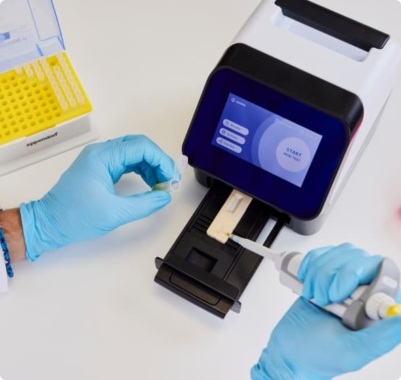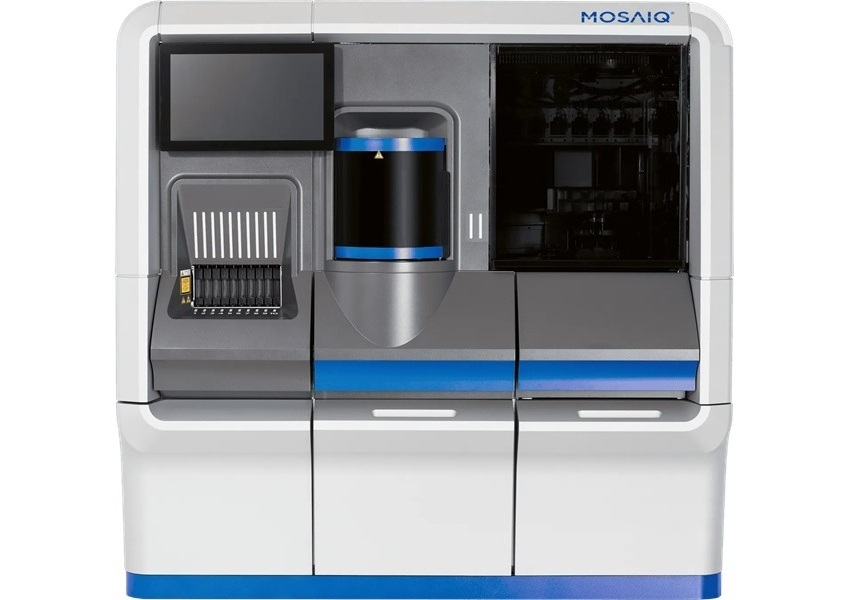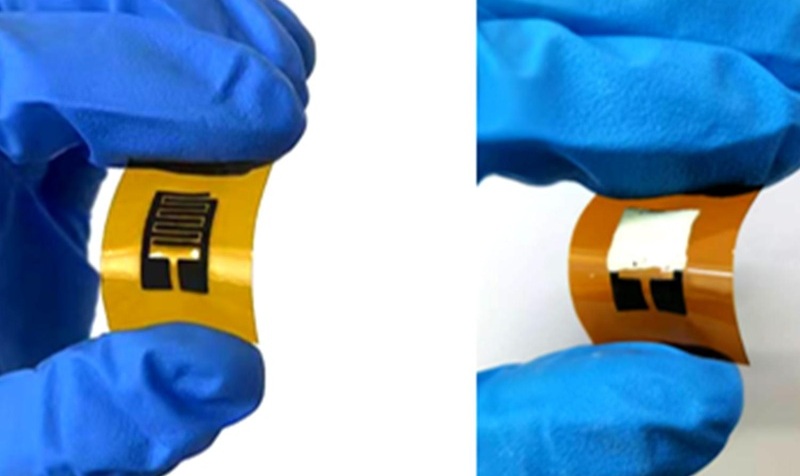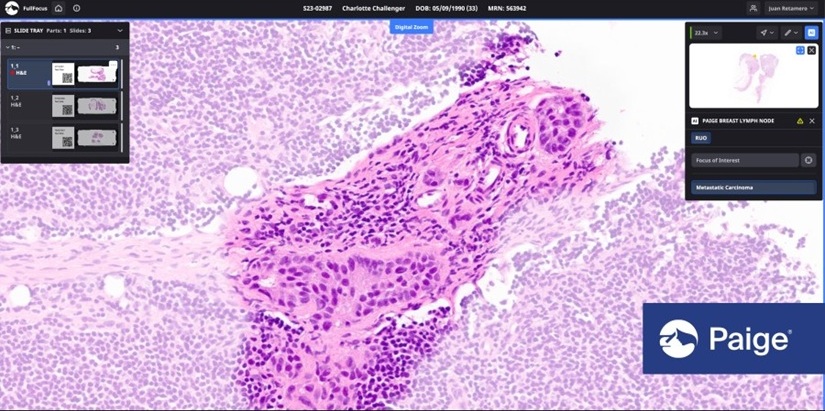Dysregulation of Retinoic Acid Signaling in Stem Cells Spurs Tumor Growth
|
By LabMedica International staff writers Posted on 05 Nov 2018 |
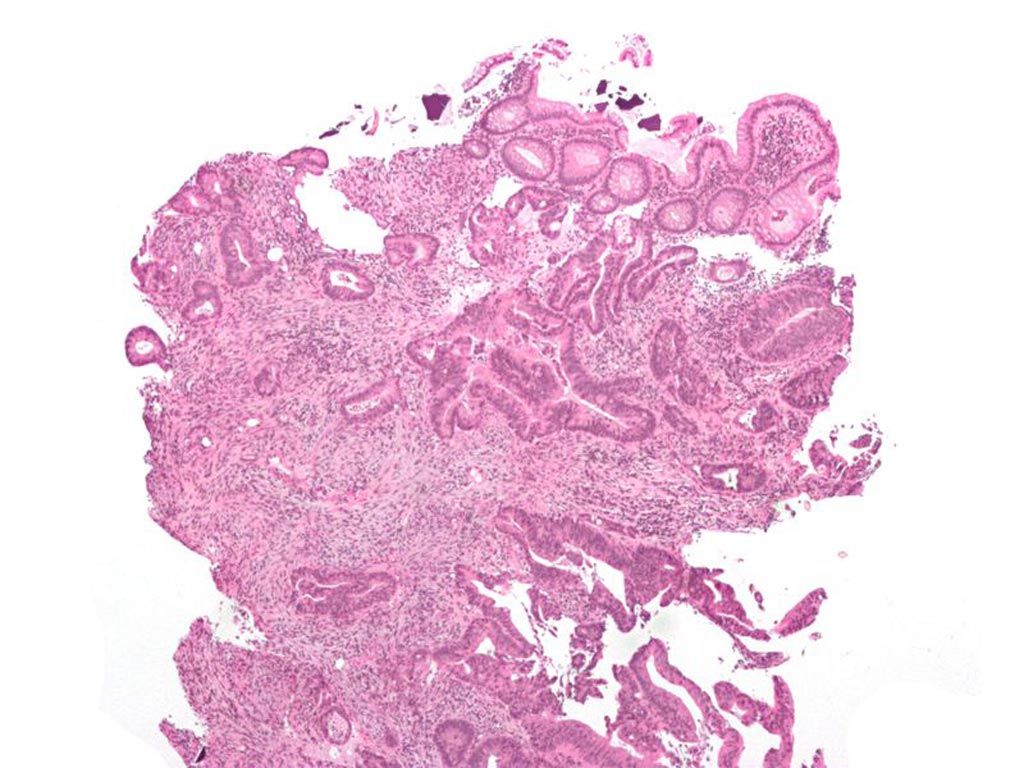
Image: Invasive adenocarcinoma (the most common type of colorectal cancer). The cancerous cells are seen in the center and at the bottom right of the image (blue). Near normal colon-lining cells are seen at the top right of the image (Photo courtesy of Wikimedia Commons).
A team of cancer researchers identified the retinoic acid molecular signaling pathway as being a factor that helps to prevent the development of colorectal cancer.
Investigators at the Christiana Care Health System (Wilmington, DE, USA) were studying the factors controlling the differentiation of colon cancer stem cells (SCs) into undifferentiated tumor cells or, in some cases, into differentiated (non-cancerous) colon cells. Since tumor development is driven by stem cell overpopulation, and in light of earlier findings that the enzyme aldehyde dehydrogenase (ALDH) was both a marker for SCs in many tissues and a key enzyme in retinoid acid (RA) signaling, the investigators examined RA signaling in normal and malignant colonic SCs.
The investigators analyzed normal and malignant colonic tissues and colorectal cancer (CRC) cell lines to see if retinoid receptors (RXR & RAR) were exclusively expressed in ALDH+ SCs, and if RA signaling changed during CRC development. Specifically, they determined whether RA signaling regulated cancer SC proliferation, differentiation, sphere formation, and population size.
Results published in the October 5, 2018, online edition of the journal Oncotarget revealed that RXR & RAR were expressed in ALDH+ colonic SCs, but not in normal cells. Western blotting/immunostaining of CRCs revealed that RA signaling components became overexpressed in parallel with ALDH overexpression, which coincided with the known overpopulation of ALDH+ SCs that occurs during, and drives, CRC development.
Treatment of SCs with all-trans retinoic acid (ATRA) was found to decrease proliferation, sphere formation, and ALDH+ SC population size and to induce differentiation. Thus, dysregulation of RA signaling in colonic SCs likely contributed to overpopulation of ALDH+ SCs and CRC growth.
“Our findings point to a number of possibilities for developing more effective stem cell targeting therapies for advanced colorectal cancer,” said senior author Dr. Bruce Boman, a senior research scientist at the Christiana Care Health System. “Our thinking has shifted to the insight that cancers originate in tissue stem cells through dysregulation or malfunction of the self-renewal process, and that cancer stem cells drive tumor growth. It follows that the optimal way to treat cancer (especially advanced cancer) is to eliminate cancer stem cells. We discovered that the retinoic acid or RA signaling pathway acts to induce differentiation of colon cancer stem cells and reduce cancer stem cell overpopulation, which puts the brakes on the primary mechanism that drives colon cancer development.”
Related Links:
Christiana Care Health System
Investigators at the Christiana Care Health System (Wilmington, DE, USA) were studying the factors controlling the differentiation of colon cancer stem cells (SCs) into undifferentiated tumor cells or, in some cases, into differentiated (non-cancerous) colon cells. Since tumor development is driven by stem cell overpopulation, and in light of earlier findings that the enzyme aldehyde dehydrogenase (ALDH) was both a marker for SCs in many tissues and a key enzyme in retinoid acid (RA) signaling, the investigators examined RA signaling in normal and malignant colonic SCs.
The investigators analyzed normal and malignant colonic tissues and colorectal cancer (CRC) cell lines to see if retinoid receptors (RXR & RAR) were exclusively expressed in ALDH+ SCs, and if RA signaling changed during CRC development. Specifically, they determined whether RA signaling regulated cancer SC proliferation, differentiation, sphere formation, and population size.
Results published in the October 5, 2018, online edition of the journal Oncotarget revealed that RXR & RAR were expressed in ALDH+ colonic SCs, but not in normal cells. Western blotting/immunostaining of CRCs revealed that RA signaling components became overexpressed in parallel with ALDH overexpression, which coincided with the known overpopulation of ALDH+ SCs that occurs during, and drives, CRC development.
Treatment of SCs with all-trans retinoic acid (ATRA) was found to decrease proliferation, sphere formation, and ALDH+ SC population size and to induce differentiation. Thus, dysregulation of RA signaling in colonic SCs likely contributed to overpopulation of ALDH+ SCs and CRC growth.
“Our findings point to a number of possibilities for developing more effective stem cell targeting therapies for advanced colorectal cancer,” said senior author Dr. Bruce Boman, a senior research scientist at the Christiana Care Health System. “Our thinking has shifted to the insight that cancers originate in tissue stem cells through dysregulation or malfunction of the self-renewal process, and that cancer stem cells drive tumor growth. It follows that the optimal way to treat cancer (especially advanced cancer) is to eliminate cancer stem cells. We discovered that the retinoic acid or RA signaling pathway acts to induce differentiation of colon cancer stem cells and reduce cancer stem cell overpopulation, which puts the brakes on the primary mechanism that drives colon cancer development.”
Related Links:
Christiana Care Health System
Latest BioResearch News
- Genome Analysis Predicts Likelihood of Neurodisability in Oxygen-Deprived Newborns
- Gene Panel Predicts Disease Progession for Patients with B-cell Lymphoma
- New Method Simplifies Preparation of Tumor Genomic DNA Libraries
- New Tool Developed for Diagnosis of Chronic HBV Infection
- Panel of Genetic Loci Accurately Predicts Risk of Developing Gout
- Disrupted TGFB Signaling Linked to Increased Cancer-Related Bacteria
- Gene Fusion Protein Proposed as Prostate Cancer Biomarker
- NIV Test to Diagnose and Monitor Vascular Complications in Diabetes
- Semen Exosome MicroRNA Proves Biomarker for Prostate Cancer
- Genetic Loci Link Plasma Lipid Levels to CVD Risk
- Newly Identified Gene Network Aids in Early Diagnosis of Autism Spectrum Disorder
- Link Confirmed between Living in Poverty and Developing Diseases
- Genomic Study Identifies Kidney Disease Loci in Type I Diabetes Patients
- Liquid Biopsy More Effective for Analyzing Tumor Drug Resistance Mutations
- New Liquid Biopsy Assay Reveals Host-Pathogen Interactions
- Method Developed for Enriching Trophoblast Population in Samples
Channels
Clinical Chemistry
view channel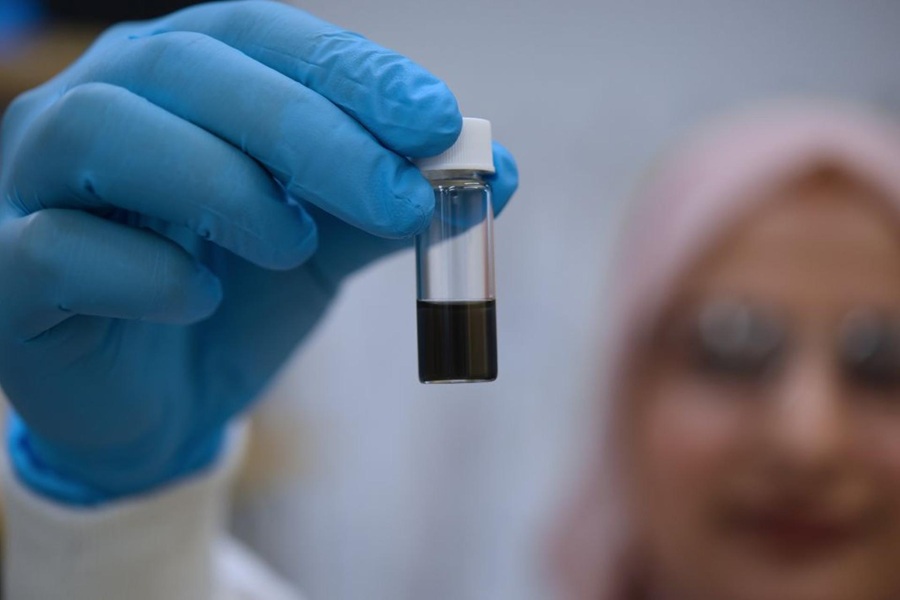
Gold Nanoparticles to Improve Accuracy of Ovarian Cancer Diagnosis
Ovarian cancer is considered one of the deadliest cancers, in part because it rarely shows clear symptoms in its early stages, and diagnosis is often complex. Current approaches make it difficult to accurately... Read more
Simultaneous Cell Isolation Technology Improves Cancer Diagnostic Accuracy
Accurate cancer diagnosis remains a challenge, as liquid biopsy techniques often fail to capture the complexity of tumor biology. Traditional systems for isolating circulating tumor cells (CTCs) vary in... Read moreMolecular Diagnostics
view channel
CRISPR-Based Tuberculosis Test Uses Mouth Swab to Simplify Screening
Tuberculosis remains the world’s deadliest infectious disease, with more than 10 million people falling ill annually and about 40% of cases going undiagnosed. Current testing depends on sputum samples,... Read more
New DNA Methylation-Based Method Predicts Cancer Progression
Cancer often develops silently for years before diagnosis, making it difficult to trace its origins and predict its progression. Traditional approaches to studying cancer evolution have lacked the precision... Read moreHematology
view channel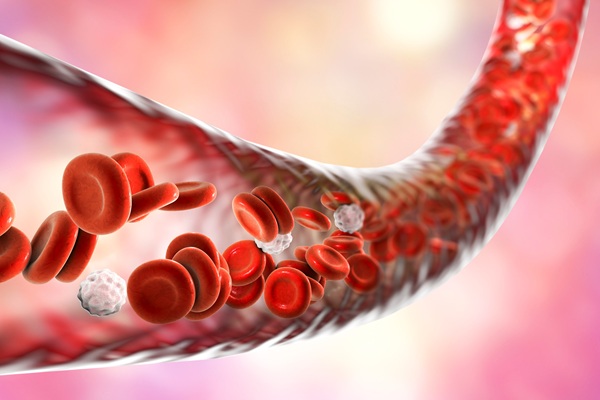
Pioneering Model Measures Radiation Exposure in Blood for Precise Cancer Treatments
Scientists have long focused on protecting organs near tumors during radiotherapy, but blood — a vital, circulating tissue — has largely been excluded from dose calculations. Each blood cell passing through... Read more
Platelets Could Improve Early and Minimally Invasive Detection of Cancer
Platelets are widely recognized for their role in blood clotting and scab formation, but they also play a crucial role in immune defense by detecting pathogens and recruiting immune cells.... Read more
Portable and Disposable Device Obtains Platelet-Rich Plasma Without Complex Equipment
Platelet-rich plasma (PRP) plays a crucial role in regenerative medicine due to its ability to accelerate healing and repair tissue. However, obtaining PRP traditionally requires expensive centrifugation... Read moreImmunology
view channel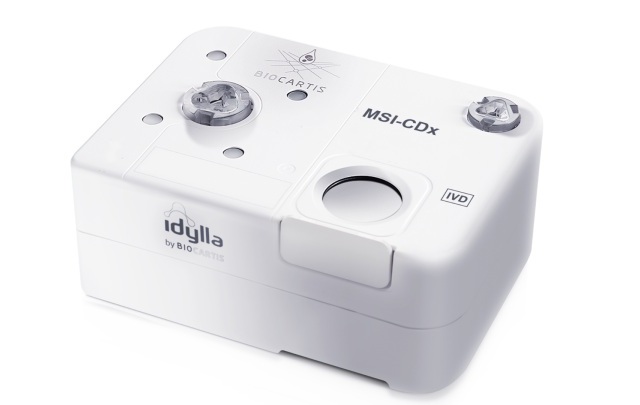
Companion Diagnostic Test for CRC Patients Identifies Eligible Treatment Population
Colorectal cancer remains one of the leading causes of cancer-related deaths worldwide, and identifying which patients will benefit most from targeted immunotherapies is critical. Existing diagnostic methods... Read more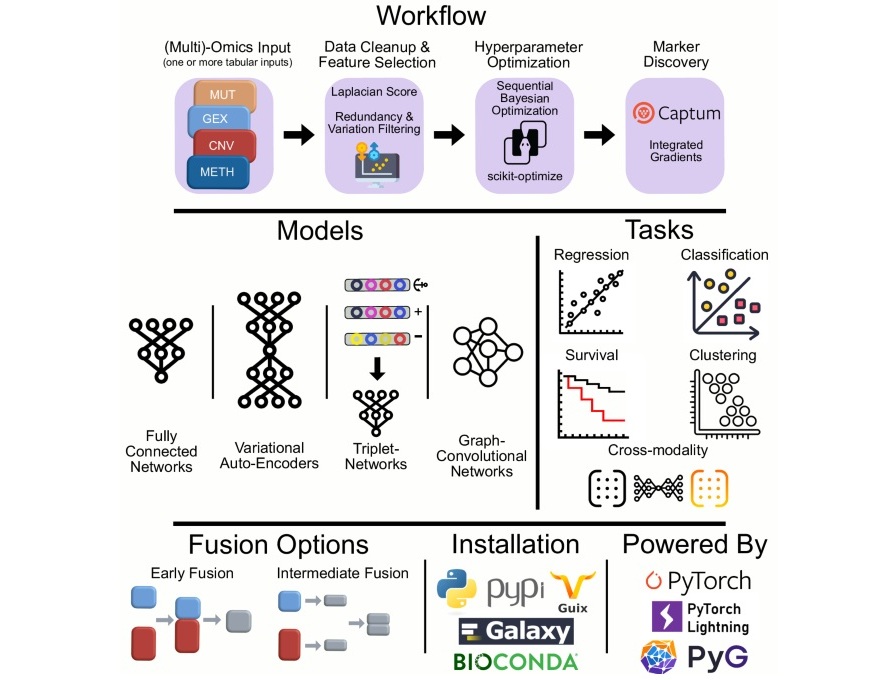
Novel Tool Uses Deep Learning for Precision Cancer Therapy
Nearly 50 new cancer therapies are approved each year, but selecting the right one for patients with highly individual tumor characteristics remains a major challenge. Physicians struggle to navigate the... Read more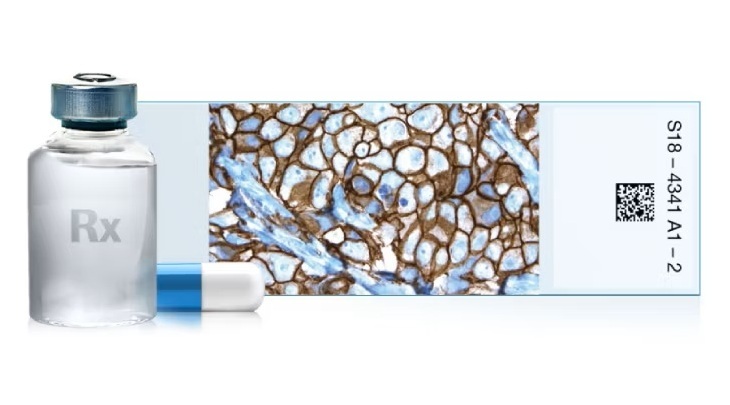
Companion Diagnostic Test Identifies HER2-Ultralow Breast Cancer and Biliary Tract Cancer Patients
Breast cancer is the most common cancer in Europe, with more than 564,000 new cases and 145,000 deaths annually. Metastatic breast cancer is rising in younger populations and remains the leading cause... Read moreMicrobiology
view channel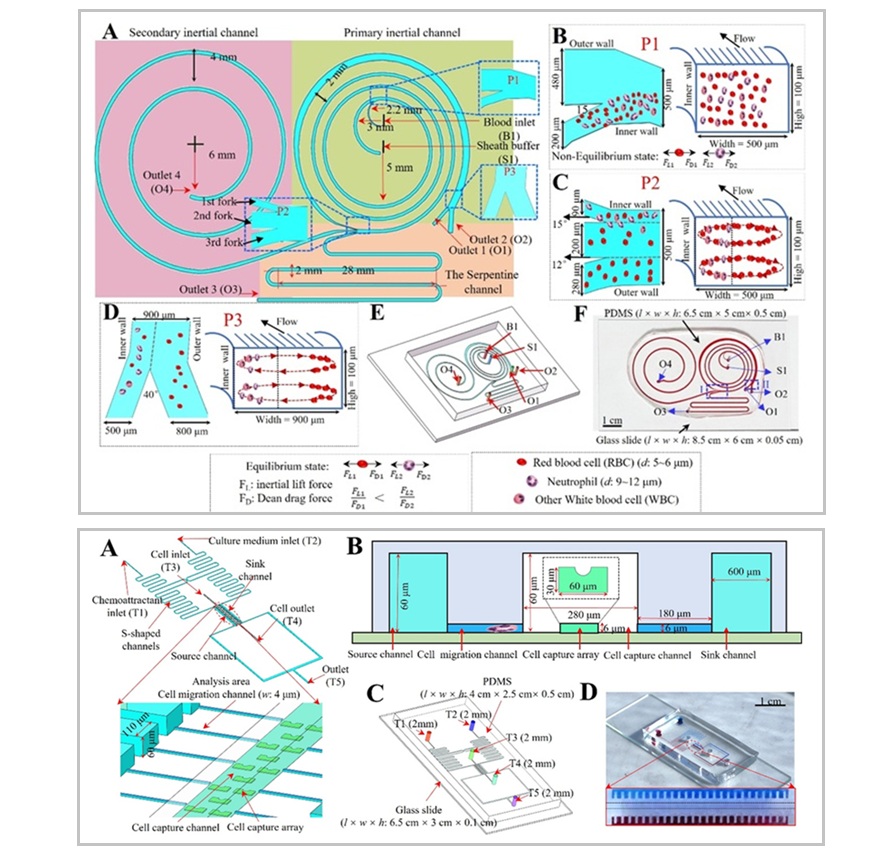
Microfluidic Platform Assesses Neutrophil Function in Sepsis Patients
Sepsis arises from infection and immune dysregulation, with neutrophils playing a central role in its progression. However, current clinical tools are unable to both isolate these cells and assess their... Read moreNew Diagnostic Method Confirms Sepsis Infections Earlier
Sepsis remains one of the most dangerous medical emergencies, often progressing rapidly and becoming fatal without timely intervention. Each hour of delayed treatment in septic shock reduces patient survival... Read more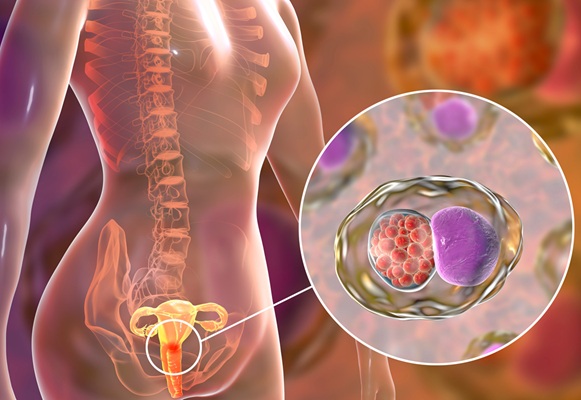
New Markers Could Predict Risk of Severe Chlamydia Infection
Chlamydia trachomatis is a common sexually transmitted infection that can cause pelvic inflammatory disease, infertility, and other reproductive complications when it spreads to the upper genital tract.... Read more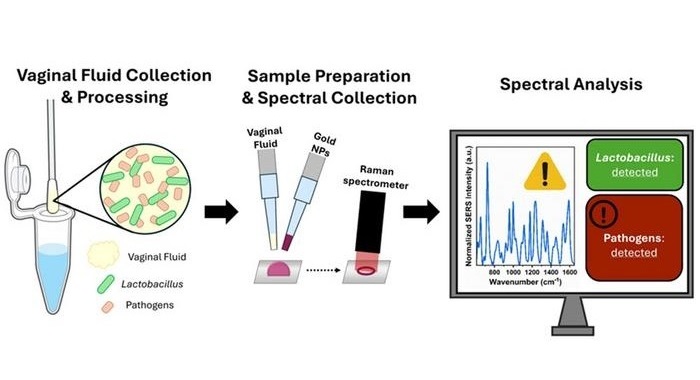
Portable Spectroscopy Rapidly and Noninvasively Detects Bacterial Species in Vaginal Fluid
Vaginal health depends on maintaining a balanced microbiome, particularly certain Lactobacillus species. Disruption of this balance, known as dysbiosis, can increase risks of infection, pregnancy complications,... Read morePathology
view channel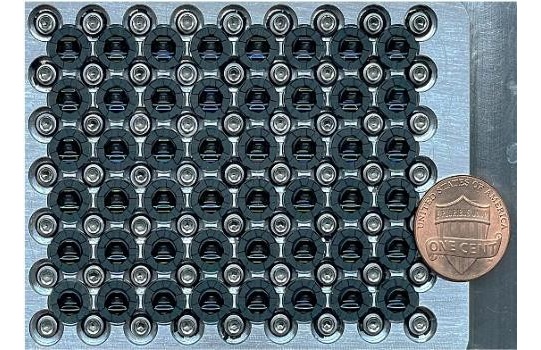
New Microscope Promises to Speed Up Medical Diagnostics
Traditional microscopes are designed for flat samples, yet real-life specimens, such as tissue slides, are often curved or uneven. This mismatch forces researchers to rely on scanning methods or costly... Read more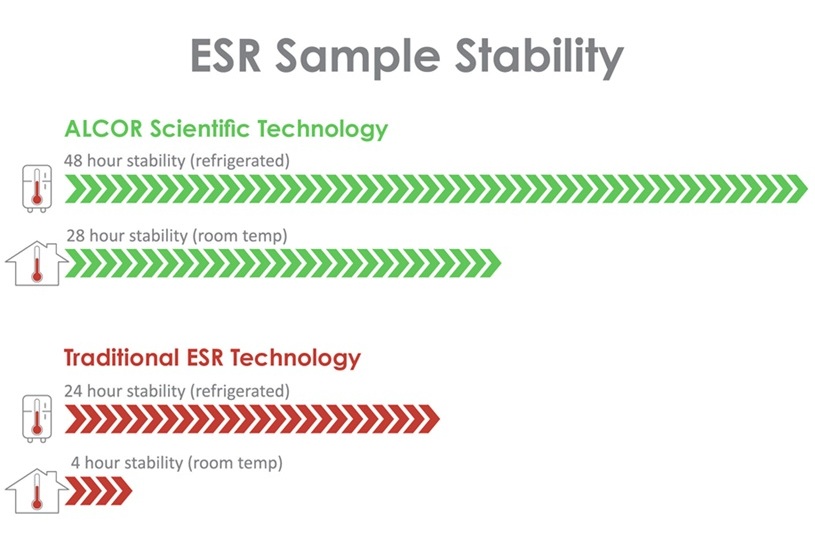
ESR Testing Breakthrough Extends Blood Sample Stability from 4 to 28 Hours
Erythrocyte sedimentation rate (ESR) is one of the most widely ordered blood tests worldwide, helping clinicians detect and monitor infections, autoimmune conditions, cancers, and other diseases.... Read moreAccurate Pathological Analysis Improves Treatment Outcomes for Adult Fibrosarcoma
Adult fibrosarcoma is a rare and highly aggressive malignancy that develops in connective tissue and often affects the limbs, trunk, or head and neck region. Diagnosis is complex because tumors can mimic... Read more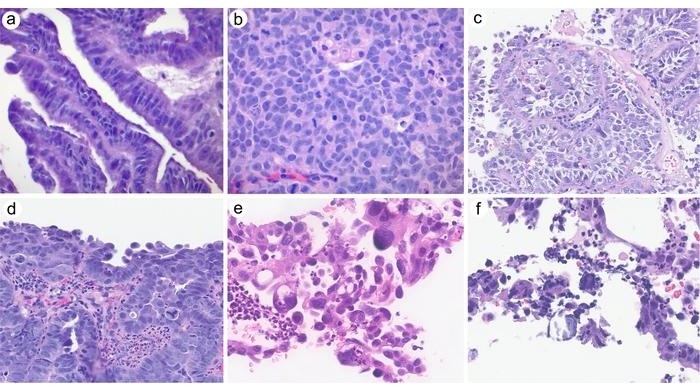
Clinicopathologic Study Supports Exclusion of Cervical Serous Carcinoma from WHO Classification
High-grade serous carcinoma is a rare diagnosis in cervical biopsies and can be difficult to distinguish from other tumor types. Cervical serous carcinoma is no longer recognized as a primary cervical... Read moreTechnology
view channel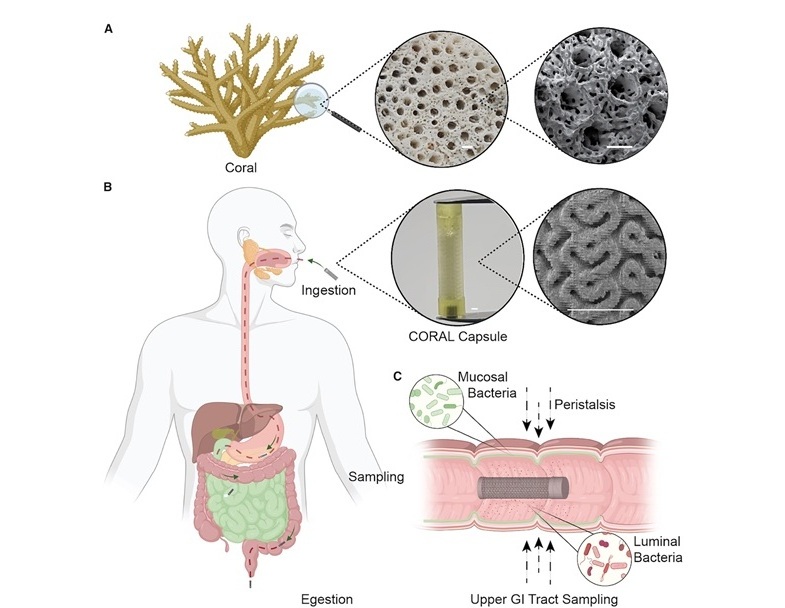
Coral-Inspired Capsule Samples Hidden Bacteria from Small Intestine
The gut microbiome has been linked to conditions ranging from immune disorders to mental health, yet conventional stool tests often fail to capture bacterial populations in the small intestine.... Read more
Rapid Diagnostic Technology Utilizes Breath Samples to Detect Lower Respiratory Tract Infections
Respiratory tract infections (LRTIs) are leading causes of illness and death worldwide, particularly among vulnerable populations such as the elderly, young children, and those with compromised immune systems.... Read moreIndustry
view channel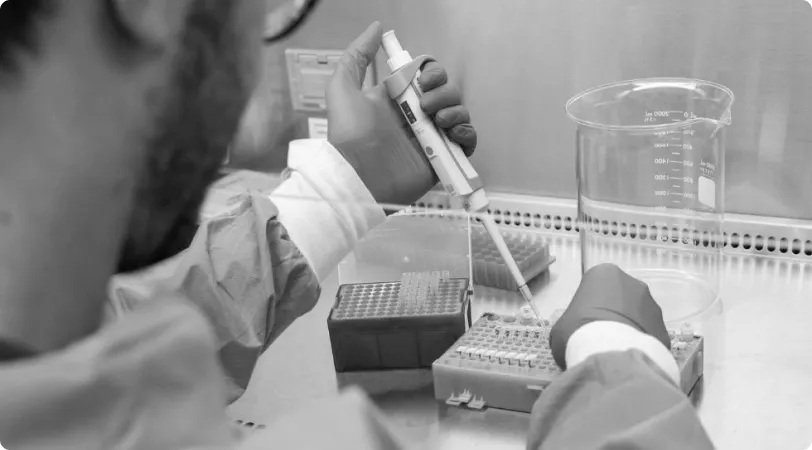
VedaBio Partners With Mammoth Biosciences to Expand CRISPR-Based Diagnostic Technologies
VedaBio (San Diego, CA, USA) has entered into a non-exclusive license agreement with Mammoth Biosciences (Brisbane, CA, USA) for the use of select CRISPR-based technologies in diagnostic applications.... Read more